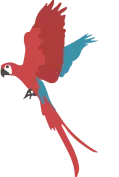As a SaaS start-up, you are looking at a classic and straight-forward customer acquisition strategy that might look like this:
-
Awareness:
In the first stage of customer acquisition strategy, a prospective customer finds out about your business by stumbling upon a blog post, seeing an article on a LinkedIn group or simply by googling keywords relevant to your company or offering. Usually, the prospect is simply looking for a solution to a problem or an answer to a specific question – not for a solution! They might not even be aware that there is a solution to their problem – or that you are specialised in this solution. What’s important in this stage:
- Boosting organic traffic with SEO-optimised articles (publish the articles on a regular basis on your website, e.g. 1 per week as well as on your personal LinkedIn pages as an article (play round-robin with the other Directors). Articles should address the pain points of your personas.
- Getting in front to the right audiences through PR initiatives, trade shows, Chamber of Commerce and personal introductions
- Encourage current users to refer other businesses to you (referral program)
- Promoting content through paid advertising (e.g. Facebook ads à need a dedicated landing page for this)
-
Engagement:
Once the prospect is aware of your great content and the solutions or ideas you have on offer, the potential customers start to consume your content more regularly. They might have signed up to your e-news or another lead nurturing sequence, they might follow your posts on a LinkedIn group or might have even requested to be LinkedIn with you. They could have downloaded an eBook from your website or any other resources you have made publicly available. At this point, they are more aware of the problem you solve and begin questioning whether they need a solution. What you can do to get a prospective client to this stage of customer acquisition startegy:
- Have exit-pop-up on your website
- Have dedicated and clear CTA (call-to-action) so your website visitor knows what to do on each page of your website.
- Offer lead magnets (e.g. The Ultimate Guide of HR Training, How to motivate a sales team checklist, etc) as a free download on your website (opt-into an email marketing automation tool such as Hubspot or Drip or simply into Mailchimp. Make sure you have a list for each tool you are offering and a little sequence set up with further information of your services à lead nurturing starts exactly here)
-
Exploration:
Now that your prospective client knows they are having a problem, they need a solution and that is hopefully YOUR solution. But firstly, people do their diligence work and will compare you with the competition out there. They will compare pricing and scope before making an inquiry with your sales team. Make sure your service/product and pricing pages give enough ammunition to answer all potential questions. If needed, compare yourself with other SaaS products and show where your software is better.
- If you use a CRM each of these steps can be tracked and followed. If you use Infusionsoft or Hubspot, you should take advantage of Lead Scoring and have your sales rep following up when the lead is sales-ready.
- If you don’t use a CRM, make sure you are able to track with other tools what is exactly happening on each page and how they are performing (e. Google Analytics, Hotjar).
- Normally, visitors go to About Us / Team Page, then pricing, then contact us. Make sure you are following up quickly on inquiries and questions. Make sure the visitor doesn’t need to leave your site to find further information.
-
Conversion and Retention:
At this stage of your customer acquisition strategy, your prospect wants a solution. They will sign up for a free trial, your sales rep jumps on the phone to help with the sign-up and onboarding. If you can, put the new customer into an onboarding campaign so this is all set on auto-pilot. Make sure you are converting them easily from the free trial to be a fully paying customer. Now it’s all about making sure they succeed with your tool and continue to be an active user.
- Customer Churn is the biggest obstacle for SaaS start-ups so make sure you are keeping your existing customers satisfied and happy. Worthwhile to have your sales rep following up with each customer once in a while to see if they are still using the platform if they are satisfied and if they know someone else who might be interested in trailing your platform.

